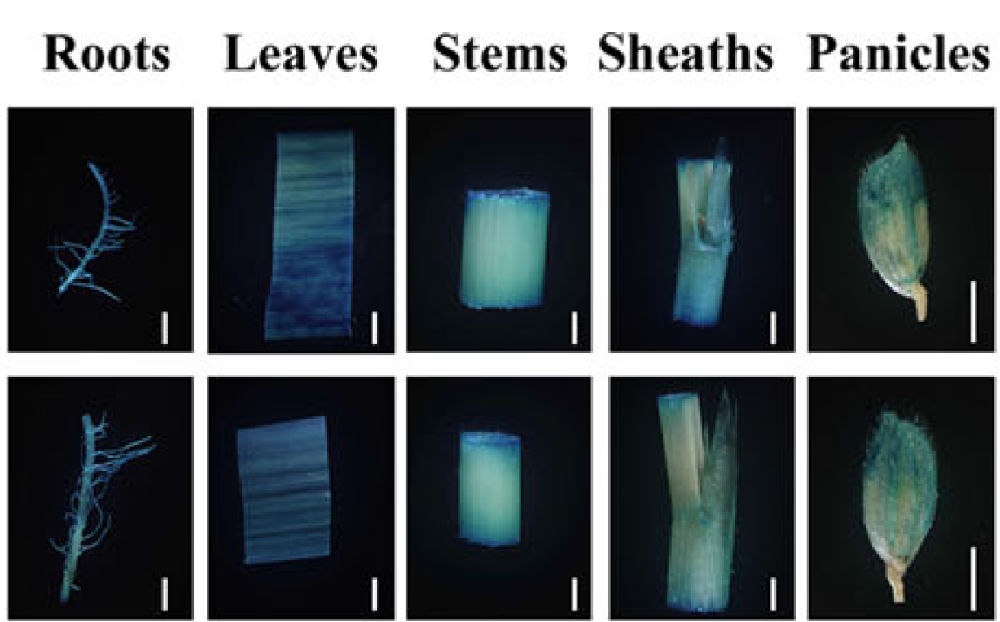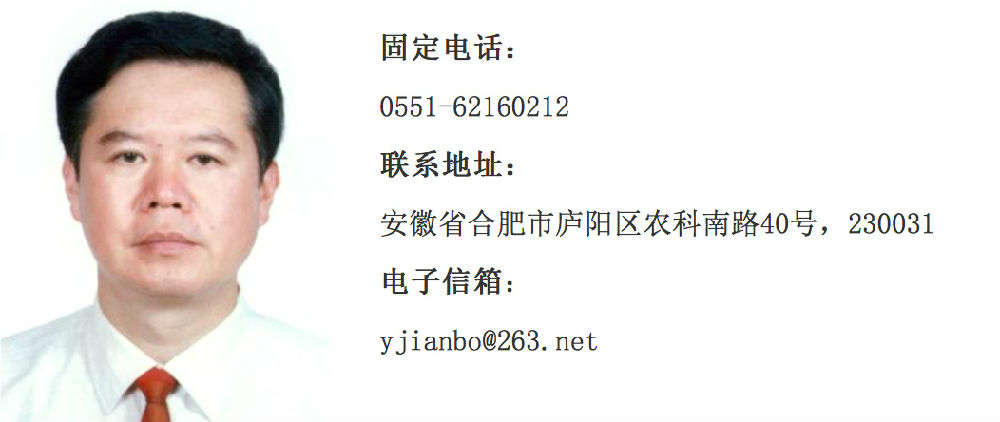博文
Plant Biotechnol J:水稻非胚乳组织表达启动子鉴定
|||

Isolation of five rice nonendosperm tissue-expressed promoters and evaluation of their activities in transgenic rice
Corresponding author: Jianbo Yang (杨剑波)
Using promoters expressed in nonendosperm tissues (非胚乳组织) to activate target genes in specific plant tissues or organs with very limited expression in the endosperm is an attractive approach in crop transgenic engineering. In this article, five putative nonendosperm tissue-expressed promoters were cloned from the rice genome and designated POsNETE1, POsNETE2, POsNETE3, POsNETE4 and POsNETE5. By qualitatively and quantitatively examining GUSplus reporter gene expression in transgenic rice plants, POsNETE1-POsNETE5 were all found to be active in the roots, leaves, stems, sheaths (鞘) and panicles (穗) but not in the endosperm of plants at different developmental stages. In addition, POsNETE2, POsNETE4 and POsNETE5 were also inactive in rice embryos (胚胎). Among these promoters, POsNETE4 and POsNETE5 exhibited higher activities in all of the tested tissues, and their activities in stems, leaves, roots and sheaths were higher than or comparable to those of the rice Actin1 promoter. We also progressively monitored (监测) the activities of POsNETE1-POsNETE5 in two generations of single-copy lines and found that these promoters were stably expressed between generations. Transgenic rice was produced using POsNETE4 and POsNETE5 to drive a modified Bt gene, mCry1Ab. Bt protein expressed in the tested plants ranged from 1769.4 to 4428.8 ng/g fresh leaves, whereas Bt protein was barely detected in the endosperm. Overall, our study identified five novel nonendosperm tissue-expressed promoters that might be suitable for rice genetic engineering and might reduce potential social concern regarding the safety of GMO crops.
利用非胚乳组织表达的启动子来激活靶基因在植物特定组织或器官中的表达,而在胚乳中的表达受到限制,这一方法在作物转基因工程中是非常有吸引力的。本文克隆了水稻中5个非胚乳组织表达的启动子,分别是POsNETE1,POsNETE2,POsNETE3,POsNETE4和POsNETE5。在转基因植株中GUSplus报告基因表达的定性和定量分析显示POsNETE1-POsNETE5在根、叶、茎、鞘和穗中各个发育阶段均表达,而在胚乳中不表达。在这些启动子中,POsNETE4和POsNETE5在所有的检测组织中表达更高,并且这两个启动子在茎、叶、根和鞘中的表达要比Actin1的启动子表达还要高。作者还对这五个启动子的单基因转基因两代植株中的表达进行监测,结果发现这些启动子可以在世代间稳定表达。利用POsNETE4和POsNETE5驱动一个改良版的Bt基因mCry1Ab进行水稻的转基因。Bt蛋白在测试植株新鲜叶片中的表达从1769.4到4428.8ng/g,且Bt蛋白在胚乳中几乎检测不到。总的来说,本文坚定了5个新的非胚乳组织表达的启动子,可为水稻的遗传转化提供适合的资源,减少关于转基因作物安全性的潜在社会问题。
通讯:杨剑波 (http://www.aaas.org.cn/4861761/4865688.html)

个人简介:1978-1982年,安徽农业大学农学系,农学学士;1986-1988年,美国Minnesota大学,植物生物技术,访问学者;1994-1997年,中国科学院等离子体所,生物物理博士。
doi: 10.1111/pbi.12858
https://m.sciencenet.cn/blog-3158122-1087682.html
上一篇:Nature Biotechnology:CRISPR–Cas9基因组编辑效率提高方法
下一篇:the plant journal:TAF15b基因通过自主途径调控拟南芥开花时间
全部作者的其他最新博文
- • Plant Physiology:CsMADS3促进柑果中的叶绿素降解和类胡萝卜素合成(华中农业大学)
- • Molecular Plant:LBD11-ROS反馈调节作用于拟南芥的维管形成层增殖和次生生长(浦项科技大学)
- • Science Advances:根结线虫通过调控植物的CLE3-CLV1模块,促进侵染进程(日本熊本大学)
- • The Plant Cell:拟南芥P小体组分通过对FLC的转录调控,影响开花时间(安徽农业大学)
- • Nature Communications:油菜素内酯参与植物营养生长期转变的分子机制解析(浙江农林大学)
- • Current Biology:光合作用产生的蔗糖驱动侧根“生物钟”(德国弗莱堡大学)